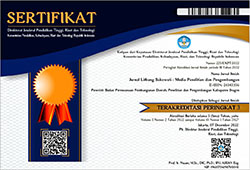PEMBANGUNAN DESA DAN TINGKAT KEMISKINAN KABUPATEN DI INDONESIA
DOI:
https://doi.org/10.32630/sukowati.v6i1.329Keywords:
multiple linear regression, poverty rate, village developmentAbstract
Poverty alleviation in Indonesia faces the main challenges with high poverty rates in rural areas. The concentration of the economy in urban areas has resulted in a much larger rural poverty than in urban areas. Because poverty in Indonesia is identical to rural areas, efforts to reduce poverty levels in rural areas through village development are a top priority in reducing the national poverty level. This study aims to analyze the effect of rural development on district poverty levels in Indonesia. The dependent variable used in this study is the district poverty level. In contrast, the primary independent variable is the number of developing and autonomous villages in each district, which is the approach of the village development variable. This study used data from 2014 and 2018. The result of multiple linear regression analysis found that the village development variable significantly reduces district poverty levels. This study also found that the strength of the correlation between village development variables and district poverty levels in the eastern part of Indonesia is higher than in the western part of Indonesia. Developing in rural areas is necessary to reduce the number of disadvantaged villages into developing and autonomous villages.
Downloads
Published
How to Cite
Issue
Section
License
Copyright (c) 2022 Riska Eka Agustina, Arya Yahya

This work is licensed under a Creative Commons Attribution 4.0 International License.


















